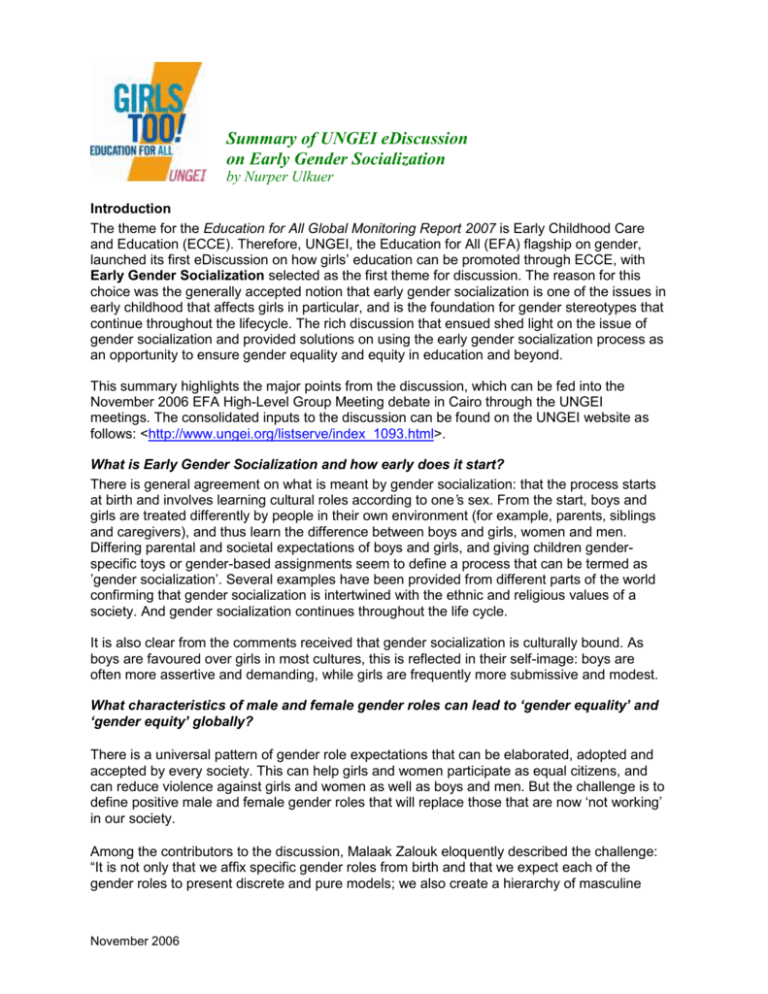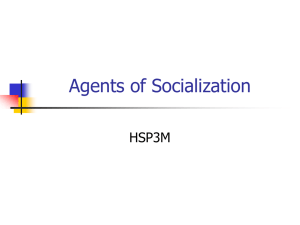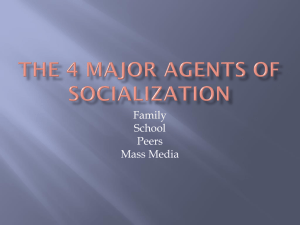Summary of UNGEI eDiscussion on Early Gender Socialization
advertisement

Summary of UNGEI eDiscussion on Early Gender Socialization by Nurper Ulkuer Introduction The theme for the Education for All Global Monitoring Report 2007 is Early Childhood Care and Education (ECCE). Therefore, UNGEI, the Education for All (EFA) flagship on gender, launched its first eDiscussion on how girls’ education can be promoted through ECCE, with Early Gender Socialization selected as the first theme for discussion. The reason for this choice was the generally accepted notion that early gender socialization is one of the issues in early childhood that affects girls in particular, and is the foundation for gender stereotypes that continue throughout the lifecycle. The rich discussion that ensued shed light on the issue of gender socialization and provided solutions on using the early gender socialization process as an opportunity to ensure gender equality and equity in education and beyond. This summary highlights the major points from the discussion, which can be fed into the November 2006 EFA High-Level Group Meeting debate in Cairo through the UNGEI meetings. The consolidated inputs to the discussion can be found on the UNGEI website as follows: <http://www.ungei.org/listserve/index_1093.html>. What is Early Gender Socialization and how early does it start? There is general agreement on what is meant by gender socialization: that the process starts at birth and involves learning cultural roles according to one’s sex. From the start, boys and girls are treated differently by people in their own environment (for example, parents, siblings and caregivers), and thus learn the difference between boys and girls, women and men. Differing parental and societal expectations of boys and girls, and giving children genderspecific toys or gender-based assignments seem to define a process that can be termed as ’gender socialization’. Several examples have been provided from different parts of the world confirming that gender socialization is intertwined with the ethnic and religious values of a society. And gender socialization continues throughout the life cycle. It is also clear from the comments received that gender socialization is culturally bound. As boys are favoured over girls in most cultures, this is reflected in their self-image: boys are often more assertive and demanding, while girls are frequently more submissive and modest. What characteristics of male and female gender roles can lead to ‘gender equality’ and ‘gender equity’ globally? There is a universal pattern of gender role expectations that can be elaborated, adopted and accepted by every society. This can help girls and women participate as equal citizens, and can reduce violence against girls and women as well as boys and men. But the challenge is to define positive male and female gender roles that will replace those that are now ‘not working’ in our society. Among the contributors to the discussion, Malaak Zalouk eloquently described the challenge: “It is not only that we affix specific gender roles from birth and that we expect each of the gender roles to present discrete and pure models; we also create a hierarchy of masculine November 2006 and feminine traits regardless of who they are attributed to. In other words, being tough (a masculine trait) is usually ranked as a more elevated trait than being considerate in the global value system of today …whereas being loving, sensitive or considerate is viewed as weak, and of course more so for men. The same is true of the dichotomy between being rational and intuitive. The assumption seems always to be that these are mutually exclusive traits.” Zalouk concluded that research indicates that the most creative human beings are able to combine femininity and masculinity in equal measure. Jennifer Strauss commented: “We need to emphasize the common (across gender) activities and interests of children as well as honouring their differences – if we do so we may be able to reduce levels of gender hostility later in life.” How can we improve our understanding and promote positive early gender socialization? Gary Barker reminded us that ’positive’ is a relative term and is culturally specific. Hajara Ndayidde reminded us that religious values and upbringing are intertwined with cultural values, which are important factors in gender socialization. Christy Swatley, referring to her middle-class United States upbringing, pointed out the many similarities in genderconditioning around the world. What would make girls and boys feel more ’positive’ about the gender roles attributed to their sex? The answer can provide a valuable pathway towards ’positive’ gender socialization. A summary of recommendations made by several contributors (based primarily on the list from Gary Barker) is as follows. Starting with what parents, children and local leaders say about gender roles and expectations, identify specific points of entry and opportunity for promoting change. Map gender roles in specific settings, understanding where change is already happening and how this change can be tapped or accelerated. Assess the environment for young children at home, examining how a literate home environment may benefit a child's learning at school and how material deprivation may hinder it. Foster greater engagement of men in the care of children. Focus on parenting and child-rearing patterns in the family (including the extended family) and community. Focus on group learning opportunities (including daycare centres, pre-schools and the early years of primary school) Focus on adult parents of both sexes, as well as on community religious leaders. Encourage parents to participate in adult education classes that integrate religion and a formal western curriculum so that they can see the need for and benefits of literacy for their daughters and wives. This list of recommendations for positive gender socialization is a good starting point. But it is also a reminder that there is a vast knowledge gap. This eDiscussion draws attention to an important socialization process that starts at birth, continues throughout the life cycle and contributes immensely to the gender disparities and inequalities faced by girls and women in school and in later life. However, it also highlights the need for further analysis and research to elaborate on gender socialization that is embedded in our cultural child-rearing patterns. November 2006









